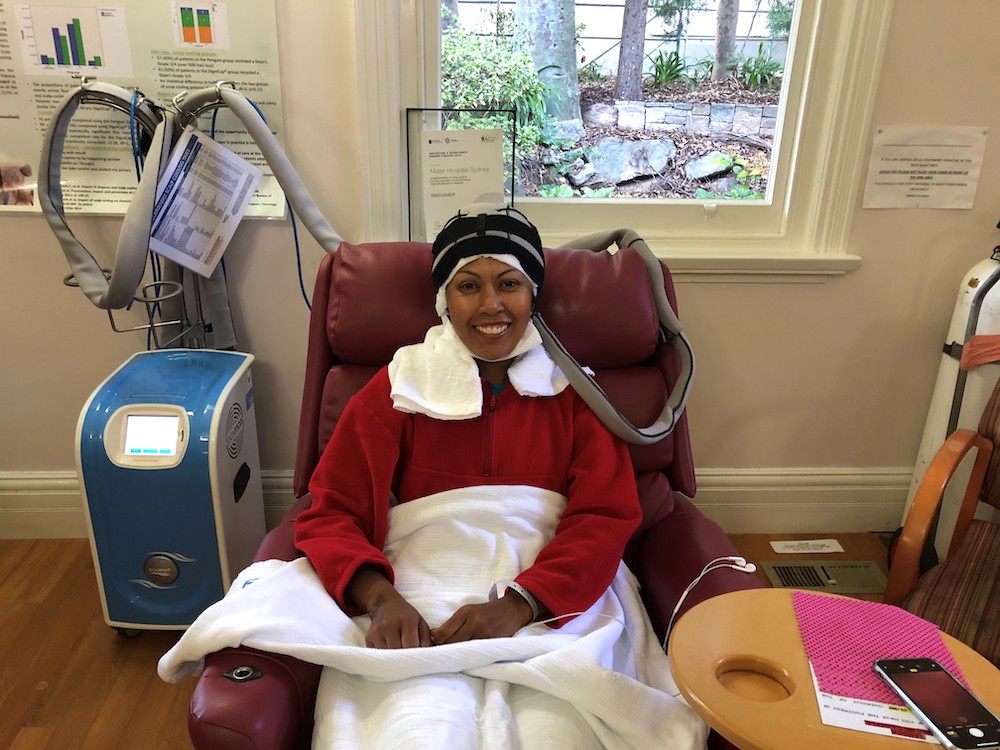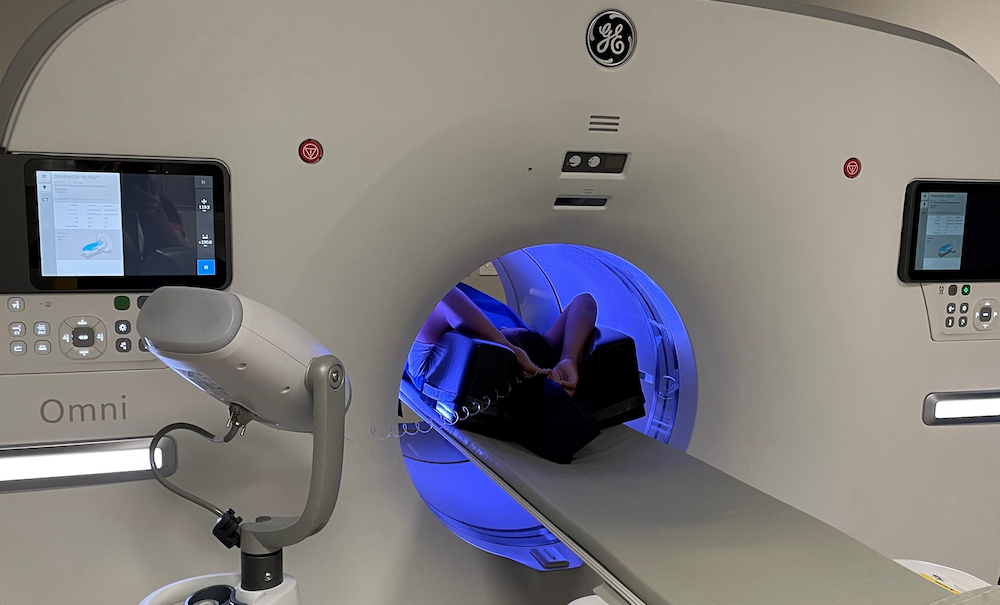A few months after Alma Dayawon’s second son was born in 2014, she began to wonder if the recurrent pain under her arm was the result of something other than breastfeeding. A mammogram showed no issues, and the clinic that performed the exam said she didn’t need to return for a few years. “Once doctors told me not to worry, it became easy to chalk it up to a pulled muscle or maybe needing a new mattress, especially since the pain would come and go,” she says. But Dayawon, a communications leader for GE HealthCare in Sydney, Australia, still felt the sensation wasn’t normal.
Finally, in November 2017, she found a breast specialist who knew what to look for in an ultrasound. Within 30 minutes, Dayawon was told she likely had cancer. Following a biopsy, she was diagnosed with invasive lobular breast cancer, which presents as a thin line of cancer cells, rather than as the typical lump that women are advised to watch for in self-exams.
Lobular breast cancer begins in the milk-producing glands, or lobules, and accounts for 10% to 15% of all breast cancers;[1] however, research and awareness are more limited than for the more common ductal breast cancer. Nevertheless, lobular breast cancer is the sixth most diagnosed cancer in women.[2]
“I’d never heard of lobular breast cancer,” Dayawon says. “In fact, the Lobular Breast Cancer Alliance, the largest solitary organisation focused on invasive lobular carcinoma, had only been founded a few months before I was diagnosed. At the time, even Google turned up very little on the subject.”
Lobular breast cancer is notoriously challenging to detect through mammography.[3] “I was shocked how quickly an ultrasound picked up what years of scans missed. If I’d known about lobular, I would have pushed for ultrasound or a breast MRI up front,” she said. “I felt validated, because I knew there was something wrong, but I also felt sheer terror.”
Dayawon consulted with two oncologists and chose a treatment plan that included four months of chemotherapy and a month of radiation treatment. Only later did research reveal that for lobular breast cancer, chemotherapy is often not particularly effective.[4] “I feel like I lost my hair for nothing,” Dayawon says, “but I understand. When you’re young and you’re generally healthy, you want to throw everything at it and try to eradicate it.”
After Dayawon completed her treatment, her doctors pronounced her in remission in mid-2018. Follow-up scans showed no evidence of disease, but “there was always fear still lurking,” she says.
Then, in 2022, she discovered a palpable lump under her arm. It was a slightly different symptom, but she experienced the same sense of foreboding as she had a few years earlier. A biopsy confirmed malignant cells in the lump, which was surgically removed.
This time, her treatment plan is less invasive. Dayawon currently takes four pills daily, plus a monthly injection that strengthens her bones to offset one of the side effects of treatment. Every few months, she also receives a PET scan to track the status of the cancer cells. A small amount of radioactive glucose is injected into her vein, and then the scanner creates detailed images of where the glucose is being used. Cancer cells show up brighter in these images because they take up more glucose than normal cells.[5] Patients have to lie still and not talk while they are inside the scanner, to avoid disrupting the procedure.
For Dayawon’s most recent PET scan, her doctors used GE HealthCare’s all-digital Omni Legend PET/CT scanner. The new system can help speed up scan times[6] and can detect small lesions with impressive accuracy. It was the first Omni Legend system to arrive in Australia and, in fact, the first in use in the Southern Hemisphere.
“The speed of the latest scan was noticeable to me, because it was over so quickly,” Dayawon says. “It can be very stressful worrying about what the scan results will show, so anything that can make the process easier makes a difference.”
Meanwhile, Dayawon and her family are moving ahead with life. She picked up a cycling habit while Australia was in lockdown for COVID-19 and continues to exercise regularly. She loves to travel and catch up over coffee with friends. Weekends are spent taking her sons, now ages 8 and 12, to cricket, soccer, and swimming practices. “I’m happy to still be here and to have things to look forward to,” she says.
She is on a mission as a patient advocate to raise awareness about lobular breast cancer, which is not rare yet is often not explained to women as a possibility, leading to missed diagnoses. “I’m hoping that women remember to trust their gut,” she says. “I found out the tumor I had was probably growing for two years from when I felt those first twinges. “I wish I’d known that breast cancer doesn’t always form a lump, and that mammograms and self-checks don’t always find abnormalities. If something doesn’t feel right, check it out.”
REFERENCES
[1] Lobular Breast Cancer Alliance, “Facts About Invasive Lobular Carcinoma: A Distinct Subtype of Breast Cancer,” 2022, https://lobularbreastcancer.org/ilc-fact-sheet/.
[2] Ibid.
[3] Karen Johnson, Deba Sarma, and E. Shelley Hwang, “Lobular Breast Cancer Series: Imaging,” Breast Cancer Research 17, article no. 94 (2015), https://doi.org/10.1186/s13058-015-0605-0.
[4] Amy Gallagher, “Questioning Chemotherapy Benefits in Invasive Globular Cancer,” Oncology Times 44, no. 4 (2022), https://doi.org/10.1097/01.COT.0000822000.53399.d2.
[5] National Cancer Institute, “PET Scan,” https://www.cancer.gov/publications/dictionaries/cancer-terms/def/pet-scan.
[6] Omni Legend 32 cm can acquire with 47% the PET scan time of a Discovery MI 25 cm. As demonstrated in phantom testing.








